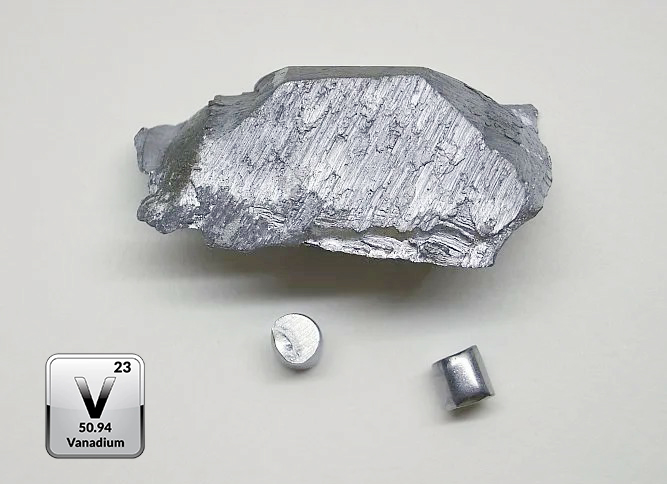-
Call-center
+998 78 141 90 99 -
Helpline
+998 71 619 23 33
The first studies on the production of metallic vanadium
The research and production association for the production of rare metals and hard alloys AMMC received a sample of vanadium pentoxide in the amount of 5.0 kg from Tamokhush LLC of the Republic of Tajikistan in order to obtain metallic vanadium.
The first practical steps were taken based on the results of scientific research and in-depth research. The production of metallic vanadium was carried out using the vacuum-carbon-thermal method on a PVA TePla installation in the workshop for the production of composite materials and hard alloys.
The method for producing metallic vanadium is as follows: vanadium trioxide, obtained by reducing vanadium pentoxide with hydrogen, is mixed with gas soot in an amount calculated by stoichiometry, and the mixture is pressed into briquettes, which are heated in vacuum in three stages, and between each two stages the briquettes are crushed and pressed again, this is necessary to update the reaction surface of the mass. With each subsequent heating, the vacuum and sintering temperature increase, and the last stage of reduction is carried out at 1680-1700°C in vacuum to 10-3 - 10-4 mm Hg.
The vacuum carbon-thermal method is considered one of the most promising for the production of vanadium. It is based on the reduction of carbon monoxide in a special vacuum at temperatures from 1250 to 1700 °C. The use of a chemically pure starting material makes it possible to obtain a spectrally pure metal.
The advantages of the method include the use of a cheap reducing agent, as well as complete control and the ability to adjust the reaction at any stage. In this case, the degree of extraction will be much higher than when using other methods.
The production of metallic vanadium by carbon-thermal reduction in vacuum was carried out in several stages. Using this technology, metallic vanadium with a carbon mass fraction of 0.33% was obtained.
The bulk of global vanadium consumption—approximately 85%—comes from the metallurgical industry. The metal is used mainly for alloying high-quality structural steels in order to optimize their performance characteristics. Vanadium is also characterized by high chemical activity, which determines the possibility of its use in various industrial sectors, including the chemical industry. Specific examples of the use of this metal are the production of dyes and the production of catalysts. In addition, this metal is used in the ceramic, textile, glass industries, in the production of lithium batteries and accumulators, and also as a component in the casting of tool, stainless and structural steel, as well as titanium alloys.
Specialists from the research and production association obtained the first samples of metallic vanadium. Research and exploration continues.



